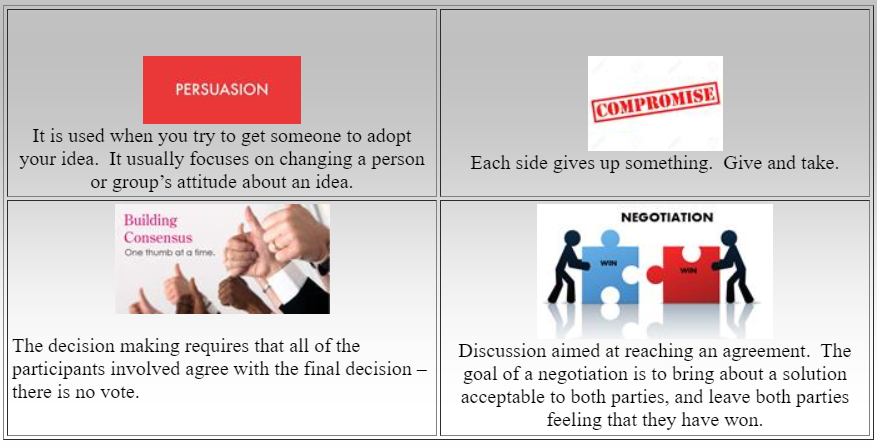Civic Participation and Skills

Unit Overview
In this
unit, students will evaluate the credibility of various sources of information
(CS#3) and explain how persuasion, compromise, consensus building, and
negotiation are used for conflict resolution (CS#4).
Section A: Content Statement 3 and
4
Content Statement #3
Issues can
be analyzed through the critical use of credible
sources.
Content Elaboration
Researching
a civic issue involves determining which sources of information are relevant to
the task, identifying the perspective or position of each source, and
evaluating the credibility of the sources. Considerations involved with
determining the credibility of sources and media outlets include:
• the qualifications/reputation
of the writer and organization;
• the circumstances in which the source material was generated;
• internal consistency and agreement with other credible sources;
• use of supporting evidence and logical conclusions; and
• evidence of bias or unstated assumptions
Content Statement #4
The
processes of persuasion, compromise, consensus building, and negotiation
contribute to the democratic process.
Content Elaboration
Persuasion is a process of
inducing others into accepting a point of view utilizing reasoning and
argumentation. Compromise is a
process of making concessions to settle differences. Consensus building is a process of working toward achieving general
agreement within a group. Negotiation
is a process of resolving disputes through a discussion of issues. These
processes come into play by varying degrees during activities related to
governing.
Let’s Practice: Conflict Resolution
Section B: Credible Sources
Bias is a feeling or prejudice
for or against a sure thing, person, or group compared with another. It can be positive or negative and usually is
considered unfair, one-sided. Recognizing
bias is an essential skill in analyzing the credibility of a source. Always be aware of bias when you encounter
propaganda. Propaganda still has a plan. The best way not to be manipulated by propaganda
is to be mindful of its bias.
There many
ways to spot bias in a source:
·
“loaded language.”
·
emotionally charged words
·
The writer only discusses one
point of view
·
Exaggerated claims
·
Half-truths
Let’s Practice: Bias or Unbias
When you are
researching, you always need to be sure that you are getting your information
from reliable sources. “Reliable” sources are written by people who are experts
in their field. These sources you can
trust. There are many characteristics of
credible and reliable sources. Below are
a few of those characteristics:
·
Facts used by a source are accurate
·
Facts can be verified by the use of other sources
·
Facts used by a source are consistent with other sources
·
The source is close to the event it reports
Let’s Practice: Reliable or Unreliable
Section C: Conflict Resolution

The above
image shows four different ways of “conflict resolution.” Each of these has a strategy to resolve
conflicts. Compromise is the process of
making concessions to settle differences.
Negotiation is the process of settling differences through a discussion
of issues. Persuasion is the process of inducing others into accepting a point
of view utilizing argumentation. The
last strategy is consensus building.
Consensus building is when both parties search for the common ground of
mutual agreement to solve a conflict.
Below is an activity where you have to determine which strategy to
resolve the conflict.
Let’s Practice: Identify the Strategy